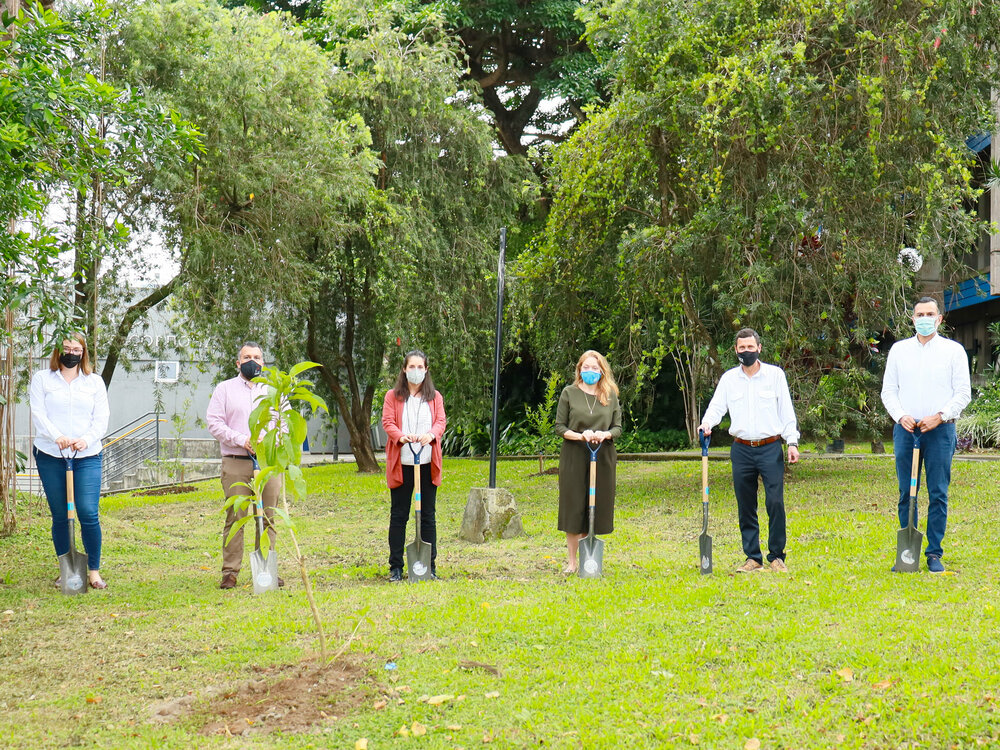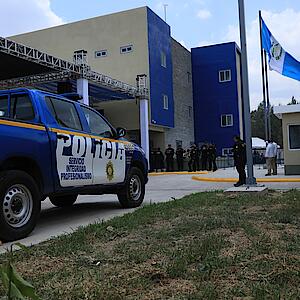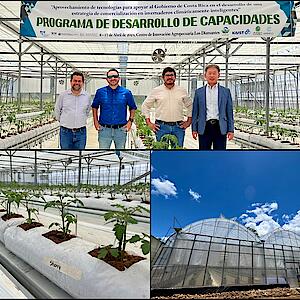CABEI participates in tree planting campaign to offset ecological footprint of financed road works in Costa Rica

During the last decade, as part of CABEI's Environmental and Social Policy, CABEI volunteers have planted 17,230 trees in the region's six countries.
San José, June 4, 2021 - A total of 250 native species trees were planted this Friday in San José at the University of Costa Rica (UCR) facilities as part of a campaign to compensate for the ecological footprint generated by the construction of the overpass at the La Bandera traffic circle, a project financed by the Central American Bank for Economic Integration (CABEI).
The activity organized by the United Nations Agency for Project Services (UNOPS), as the project's executing unit, was attended by CABEI Country Chief Officer Mauricio Chacón, who highlighted the inter-institutional work carried out to protect the environment.
"These plantations will grow in an area of high vehicular traffic in San Jose, allowing us to capture carbon dioxide emissions and thus positively affect the improvement of air quality, also help prevent erosion caused by wind and water, as well as beautify the city, among many other benefits," said Chacon.
The overpass at the La Bandera traffic circle, financed by CABEI for US$21.9 million, is part of the CABEI's US$430.5 million Strategic Road Infrastructure Works Program, which included the construction of the Social Guarantees traffic circles in Zapote and the Bicentennial traffic circle in Guadalupe, as well as the entire North Bypass (currently under execution), among many others.
This tree planting initiative is part of CABEI's Environmental and Social Policy, through which the institution ensures adequate environmental and social management of the projects it supports.
Since 2010, volunteers from the region's six countries have been planting trees every year, planting to date 17,230 trees in vulnerable areas affected by climate change.
In Costa Rica, there are 600 in areas such as the Espíritu Santo Park in Pavas, the San Juan La Selva Biological Corridor in Siquirres and the San Gerardo de Dota Reserve in San José.



